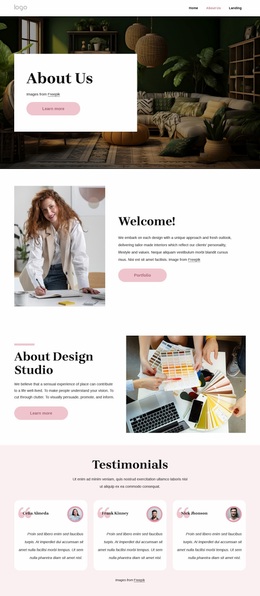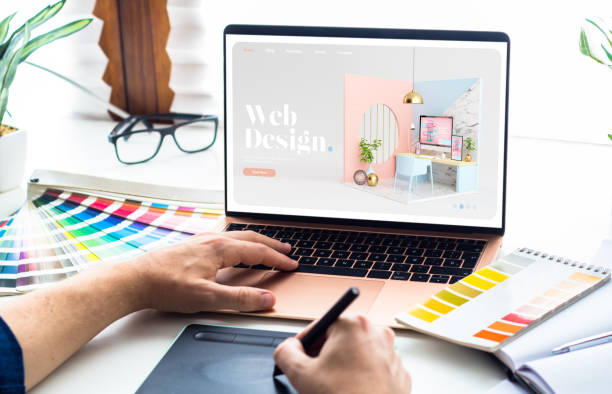The Role of User-Centered Website Design in Increasing Customer Retention
The Role of User-Centered Website Design in Increasing Customer Retention
Blog Article
The Ultimate Overview to Modern Internet Site Design Trends
In the ever-evolving electronic landscape, modern site layout trends play a vital function fit customer experience and interaction. From the rise of minimalist style principles that focus on simpleness to the influence of strong typography in defining brand name identity, each aspect adds to a cohesive on the internet visibility. The emphasis on receptive and mobile-first methods, along with cutting-edge microinteractions, further improves use. Furthermore, the expanding emphasis on lasting internet layout techniques reflects a commitment to environmental responsibility. These fads collectively elevate important inquiries regarding the future of effective internet style and what it implies for customers and businesses alike.
Minimalist Style Concepts
Minimalist design concepts highlight the concept that much less is a lot more, promoting for simpleness and capability in aesthetic communication. This strategy remove unneeded aspects, focusing instead on important components that communicate the intended message successfully. By focusing on clearness, minimalist style improves individual experience, enabling visitors to browse internet sites easily.
Core tenets of minimalist style include using ample white space, which produces a feeling of equilibrium and organization. This adverse space not only directs the audience's focus to crucial elements but likewise cultivates a calming visual atmosphere. In addition, a limited shade palette is typically utilized, utilizing soft tones or monochromatic systems to preserve visual cohesion and avoid frustrating the individual.
Typography plays a vital role in minimal layout, where clear fonts are picked for their simplicity and performance in connecting web content. Eventually, minimalist style concepts grow a concentrated environment that motivates customers to engage with the content, enhancing the overall effectiveness of contemporary site design.
Strong Typography Choices
Embracing vibrant typography selections has ended up being a defining attribute of contemporary web site layout, as it effectively records focus and shares solid messaging. Developers are significantly utilizing typography not merely as a useful component however as a key aesthetic component that improves the overall visual and individual experience.

In addition, the association of vibrant typography with minimalist design principles permits striking contrasts, improving readability while preserving visual appeal. Making use of whitespace around vibrant text better highlights its significance, guaranteeing that the message resonates with the target market.
As digital landscapes end up being more affordable, leveraging strong typography enables brands to differentiate themselves and leave an enduring impression. The cautious selection of font styles and their application can stimulate emotions, develop tone, and drive activity, making strong typography an indispensable device in modern-day internet site layout. Eventually, it is a powerful method to boost storytelling and ensure that crucial messages are not just seen yet also really felt.
Mobile-first and receptive Design
Mobile-first and responsive style has actually become an important concept in modern-day website development, reflecting the boosting dependence on mobile tools for accessing online content. As individual actions changes towards mobile surfing, developers have to prioritize producing experiences that adapt flawlessly throughout numerous display sizes and resolutions.
A receptive design ensures that a web site instantly changes its format, pictures, and functionality based upon the device being utilized. This method boosts individual experience by giving anonymous constant navigation and readability, regardless of whether the visitor is on a desktop, smartphone, or tablet computer. Moreover, mobile-first layout supporters for developing sites at first for smaller sized screens, consequently scaling approximately bigger screens. This approach motivates a much more streamlined and effective design process, concentrating on necessary content and capability first.
Carrying out mobile-first and responsive concepts not just accommodates customer preferences however also lines up with search engine optimization (SEO) techniques. Significant online search engine, like Google, focus on mobile-friendly sites in their rankings, making it critical for companies to adopt these style techniques. In an affordable electronic landscape, accepting responsive and mobile-first style is not simply a choice; it is essential for making certain access and interaction with a varied audience.
Involving Microinteractions
Microinteractions play a pivotal duty in enhancing individual interaction and overall site experience, especially in the context of receptive and mobile-first layout. These refined layout components provide prompt responses to users, making communications more enjoyable and intuitive. Instances include switch animations, alert informs, and packing indications, which not just guide individuals however also produce a feeling of connection with the interface.
Incorporating engaging microinteractions can significantly improve functionality by minimizing cognitive lots. When individuals get auditory or visual responses upon executing actions, such as clicking a switch or submitting a type, they feel a lot more confident in their options. This cultivates a smoother navigation experience, inevitably raising user retention.

As site style patterns remain to evolve, the significance of microinteractions can not be overstated. They function as the subtle yet powerful touchpoints that change average communications into amazing experiences, click for more info thus boosting the total effectiveness of contemporary web design.
Sustainable Website Design Practices
Lasting web style techniques are coming to be increasingly crucial as the digital landscape expands and ecological concerns climb. Designers and programmers are acknowledging their responsibility to create sites that not just serve individual requirements but also reduce environmental effect. This strategy encompasses numerous crucial approaches.
First of all, enhancing energy intake is extremely important. Web sites should be developed to fill quickly and effectively, which decreases server power use and enhances individual experience. Strategies such as photo compression, reducing HTTP requests, and making use of modern coding methods contribute dramatically to this objective.
Second of all, picking environment-friendly organizing suppliers is vital - website design. Lots of hosting business are currently powered by renewable resource sources, making it possible for websites to operate in a much more lasting fashion. This choice reflects a commitment to reducing carbon footprints
Moreover, taking on a minimalist layout can boost sustainability. Less aspects on a page result in less information transfer, which not only accelerates check my source packing times however additionally saves sources.
Last but not least, promoting digital access ensures that web sites get to a wider audience without unneeded bloat, aligning individual experience with ecological obligation. By incorporating these sustainable methods, internet developers can add positively to both user interaction and the world's well-being.
Verdict
In summary, modern web site style patterns emphasize the combination of minimal principles, strong typography, and receptive design to improve individual experience. Involving microinteractions add to memorable communications, while lasting practices support for ecologically mindful development. Collectively, these elements not only elevate visual charm but additionally enhance performance, making sure that web sites are both visually striking and straightforward. Taking on these trends is essential for developing impactful electronic experiences that reverberate with individuals in a significantly competitive online landscape.
In the ever-evolving digital landscape, contemporary site style trends play a crucial duty in shaping individual experience and involvement. By prioritizing clearness, minimal style improves customer experience, permitting site visitors to navigate sites effortlessly.
Eventually, minimalist layout concepts grow a focused environment that urges individuals to involve with the web content, boosting the total efficiency of contemporary web site design.Microinteractions play an essential function in boosting individual interaction and overall site experience, particularly in the context of mobile-first and responsive style.In recap, contemporary web site layout fads highlight the combination of minimal concepts, bold typography, and receptive design to enhance customer experience.
Report this page